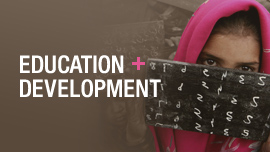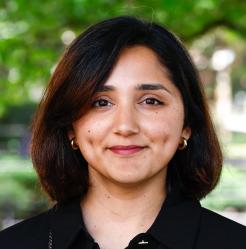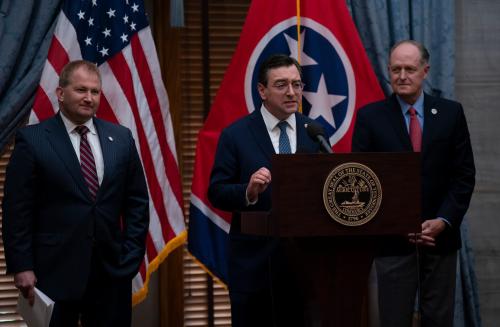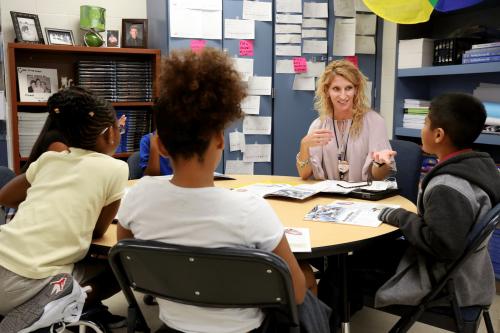Today, young people under the age of 24 make up 41% of the world’s population. Despite global recognition of young people’s right to inform and participate in decisions that affect them, education systems offer few substantial—rather than symbolic—roles for youth to shape global agenda and dialogues. Youth are increasingly demanding meaningful opportunities to inform and shape policies and agenda that impact their present and futures. While some are informing local education decisions in youth councils and school boards, youth are redefining civic engagement through social media, protests and, activism. It is critical to reimagine meaningful youth engagement in global education, and co-create agendas and dialogue with youth, rather than for them.
Meaningful youth engagement is the intentional and ongoing participation of youth in decisions. This requires moving beyond simply giving youth voice to centering youth voice in decisionmaking by breaking down barriers to entry and creating opportunities for shared decisionmaking. Critical to this work is the power of intergenerational partnership. The Center for Universal Education’s (CUE) work on youth agency in and through education has revealed the importance of intergenerational partnerships to tackle student disengagement, strengthen girls’ agency, and more.
In celebration of International Youth Day, we reflect on the intergenerational partnerships that shaped the planning of CUE’s annual Symposium on education systems transformation, where youth weren’t asked to fit into an existing structure, but were invited to shape this year’s theme: Centering young people’s voice and agency in and through research and policy. Youth were seen as experts in a variety of topics, including education research, communications, and generative AI. Adults and youth worked together to support one another to lead in ways that aligned with their strengths and interests. This blog shares collective lessons learned from building learning spaces that center young people, with young people. These ideas were shaped by young people who were trusted to lead and adults who shared power with youth partners.
1. Recognize that young people are not a monolith
There is no single “youth perspective.” Young people hold intersecting identities shaped by age, geography, race, disability, class, language, and culture. Some need time off from school to attend events, while others require space for prayer or dietary accommodations. Effective engagement starts by recognizing this diversity and designing with it in mind. Avoid assumptions, and instead, ask. Ask young people their preferred modes of participation, provide materials in accessible formats and many languages, and create opportunities for different kinds of contributions—spoken, written, digital, visual. Inquire about disability accommodations for youth with disabilities.
2. Honor intergenerational expertise
Young people are not merely the “leaders of the future.” They lead every day. They bring expertise, relevant skills, lived experience, and creative insight that can enrich any space. Rather than asking them to speak broadly “as youth,” invite them to lead sessions, facilitate dialogue, and speak on the issues they know best. Assign roles based on skill and substance, not age. Invite adults to enter the space not only to mentor, but also to learn. When all generations are seen as knowledge-holders, productive collaboration becomes possible.
3. Ensure safety and consent
When young people feel safe, they are more likely to participate, ask questions, and disagree. Diversity in factors such as age, race, gender, class, and geography can create power imbalances where young people may be uncomfortable expressing their views freely. Provide training, resources, and expectations to adults on promoting positive social norms and behaviors that position young people as partners and encourage their equal participation. Young people’s participation must always be voluntary at all levels of engagement. Consent must be ongoing and fully informed, not something collected once and forgotten. This includes consent from young people with regard to overall participation as well as audio, photo, and video documentation at the event.
4. Compensate young people’s expertise
Participation is labor. And labor should be acknowledged—especially when it draws on time, emotional energy, and expertise. Compensation should reflect local laws, cultural norms, and the preferences of the young people involved. This might include honoraria, stipends, school credit, or other meaningful forms of recognition for their contributions as partners.
5. Co-create, don’t just consult
Young people should help shape the purpose, audience, and structure of the event from the outset. Co-creation happens on a continuum, from tokenistic participation to shared decisionmaking and leadership. Their role must go beyond filling a seat or checking a box. When students are brought in early, their ideas influence the direction, not just the delivery. This requires clear conversations about why they are involved and what value they bring. Without early input, youth participation risks becoming performative
6. Sustain structures of trust and support
Trust is built through consistent two-way communication, early preparation, and clear expectations. Young people engage more fully when they understand how their role connects to the broader goals. This means sharing information ahead of time, checking in regularly, and creating space for questions and feedback. When students are given time to prepare and adults follow through on what they promise, the dynamic shifts. Participation becomes deeper, more confident, and more collaborative. Strong support signals that youth are not being included symbolically, but as valued partners.
7. Reimagine the physical space to encourage intergenerational learning
Physical space can reflect both power dynamics and how people learn. At events, seating charts, stage design, and facilitation styles can either reinforce hierarchies and best practices or dismantle them. Encourage intergenerational seating to foster more balanced conversations. Rather than isolating young people at the margins, place them in dialogue with researchers, educators, and policymakers.
8. Make youth engagement a long-term commitment
Leverage the event and intergenerational planning group to create meaningful connections with youth participants over time. Follow up with young people to get their feedback and advice on future events that incorporate youth voice and participation. Consider how this experience might open up personal or organizational practice to deepen youth participation and collaboration for future events and projects.
Conclusion
Tokenism can sometimes be a nebulous idea to confront. But leaning into shared experiences helps break down barriers. Young people’s participation should not merely be limited to discussions where young people are at the center of the issue. There must always be room at the table. At a time when everything from free speech to academic freedom is increasingly under threat, spaces of policy discourse ought to be considered incomplete without the active participation of young people. In the same way, intergenerational partnerships must transcend one-off symposiums, or spaces where young people are seen and not heard.
Because radically reimagining more just and democratic education, economic, and social systems begins by ceding power to a generation inheriting a world in crisis.
Nothing about young people, without them.
The Brookings Institution is committed to quality, independence, and impact.
We are supported by a diverse array of funders. In line with our values and policies, each Brookings publication represents the sole views of its author(s).







Commentary
How to meaningfully engage youth in designing global education events
August 12, 2025